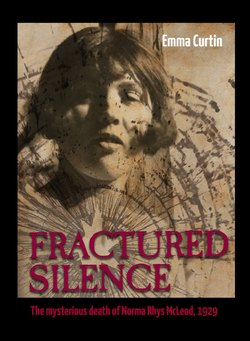Читать книгу Fractured Silence - Emma Curtin - Страница 9
На сайте Литреса книга снята с продажи.
____________________
ОглавлениеSo, I’d begun to develop a more distinct impression of Norma. But in the early stages of my research, I still didn’t know what she looked like. The only thing I knew about her appearance was taken from the pathologist’s report. She was of “slight” stature at five foot, three inches (about 160 centimetres), and slightly less than eight stone (about 50 kilograms). Only a grainy image of ‘the victim’ appeared in a couple of newspaper articles, and these looked like they’d been sketched from a photograph. I was desperate to ‘see’ Norma. There’s something powerful about looking into the eyes of someone who’s long since departed this world. Eyes are, as they say, ‘the windows to the soul’. I was desperate for the opportunity to see what Norma’s eyes might reveal.
One of my first archival interactions – with Caulfield Grammar – would indirectly lead me to what I’d longed for (not just one, but several photos of Norma and her family). I knew from the newspapers that Norma had taught at Caulfield Grammar, so the school archives seemed a good place to start. What I learnt through a brief ‘In memoriam’ piece held at the school, was that Norma’s tenure here had only been short, yet she was very well regarded. She’d held the position of Kindergarten Teacher for just two terms and had “natural gifts and enthusiasm … [and] the prospect of a very successful teaching career”.
Sadly, the archives had no photos of Norma. However, significantly, in terms of new avenues of investigation, I learnt that Norma’s brother, Rhys, had been a student at Caulfield Grammar and that after his death in 2000, family members had approached the school archives and donated some photos of his Caulfield Grammar days.
I’d tried before to trace family members and had very little joy. I’d discovered through a newspaper ‘Family Notice’ that Rhys had had a daughter, but her name was never printed and no avenue I explored had enlightened me. Now, thanks to the Caulfield Grammar archivist, I had a name and the Australian state in which she lived, but for obvious reasons of privacy, the archivist couldn’t give me an address.
It was a long shot, but using the fabulous power of Google, I found a potential match and an address for Norma's niece. I was so excited … and also a little scared – What would I say? What was I planning to do with the information I’d gathered? What was I expecting from Norma’s family? Was I just a voyeur, as scandal-hungry as the 1929 journalists? What were my motives? Until now, this had just been a fun hobby; a real-life game of Cluedo. Meeting Norma’s family would create a whole new dynamic. Was I ready for that? And what if I dredged up painful family secrets? And what if Norma’s niece didn’t want to talk? What would be worse – her not wanting to talk to me or her wanting to talk to me?
All these questions whirled around and around my head. But I’d come this far and I had to follow the lead. I needed to commit. So I sent her a letter. Little did I realise at this point that my commitment and determination would be strengthened, not just by the prospect of new research, but in response to tragedy …
Now forgive me here as I stray into the very personal, but this is integral to my connection to Norma’s story. Exactly a month after writing to Norma’s niece, my husband, John, was diagnosed with a brain tumour – it was terminal. It may seem weird, but chatting together about Norma helped us counterbalance all the awful but necessary talk of medication and ‘end of life’ stuff. And for John, it provided an opportunity to challenge me with some outlandish ‘solutions’ to the mystery. We laughed and cried and somehow Norma was always there. Ultimately, one of John’s many wishes for me was that I finish telling Norma’s story. He died in October 2015 and I took that wish and ran with it.
So here I was, with the overwhelming emptiness of grief … and a new lead to follow. I decided to fill one by following the other. It was as if John’s death had given me a new appreciation of the importance of ensuring the lives of the dead aren’t forgotten. And the timing of research and diagnosis meant that grief and Norma were now intertwined. In remembering Norma, I remember John, and vice versa.
Norma became my lifeline and I, her obsessive advocate.
